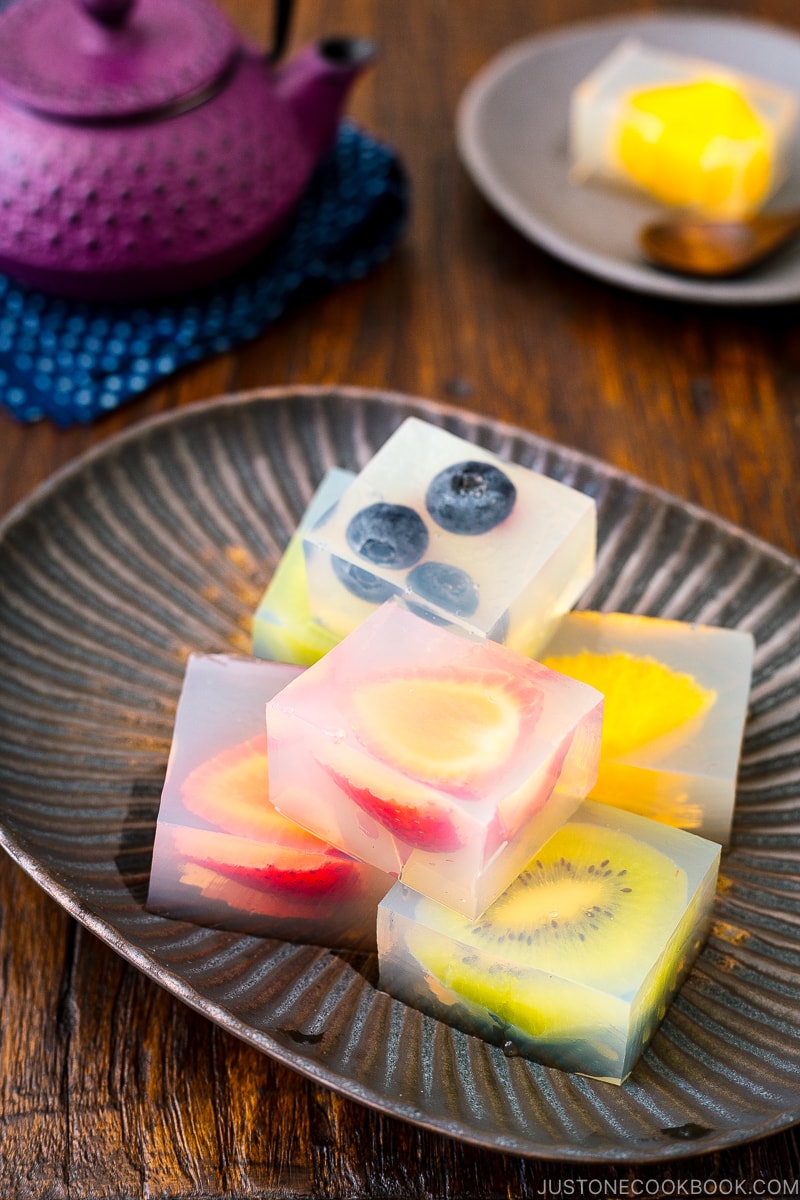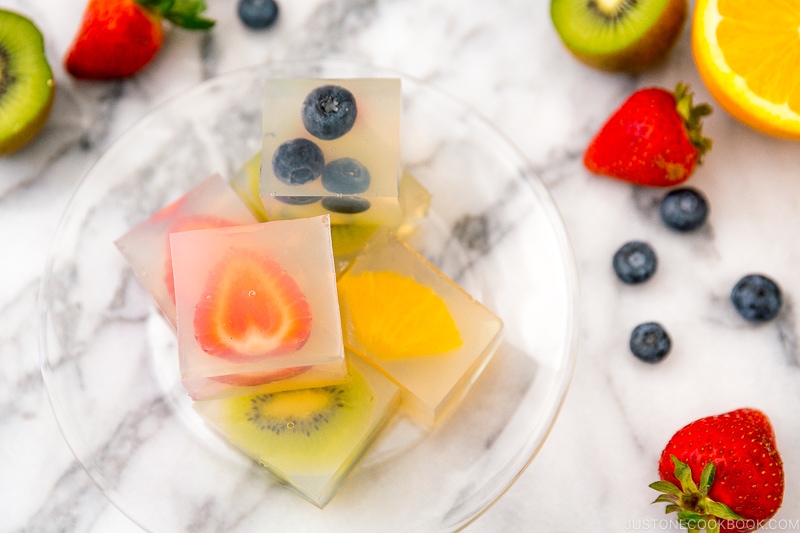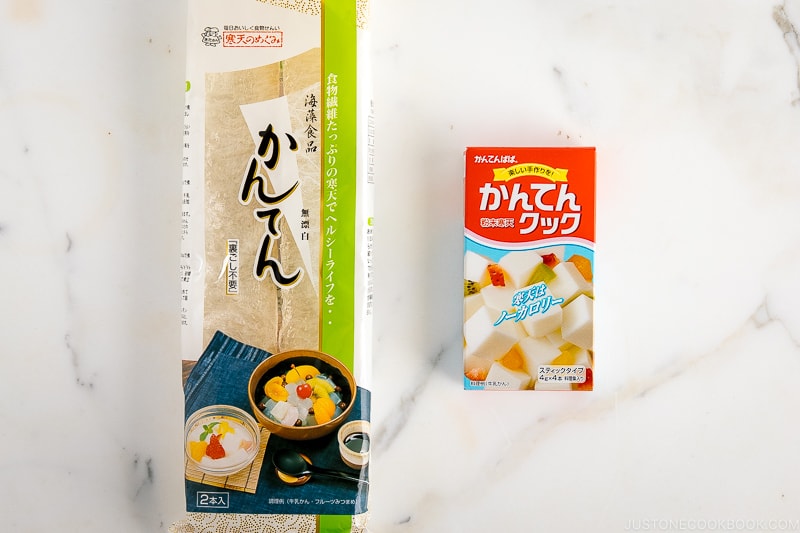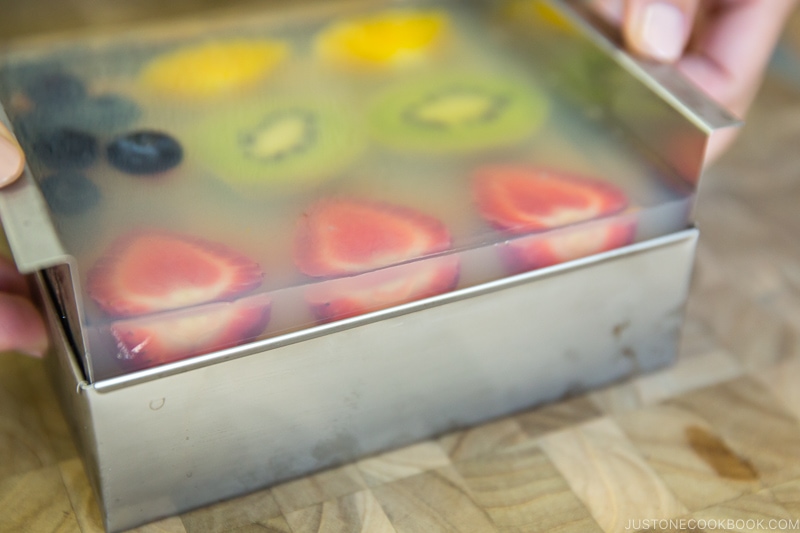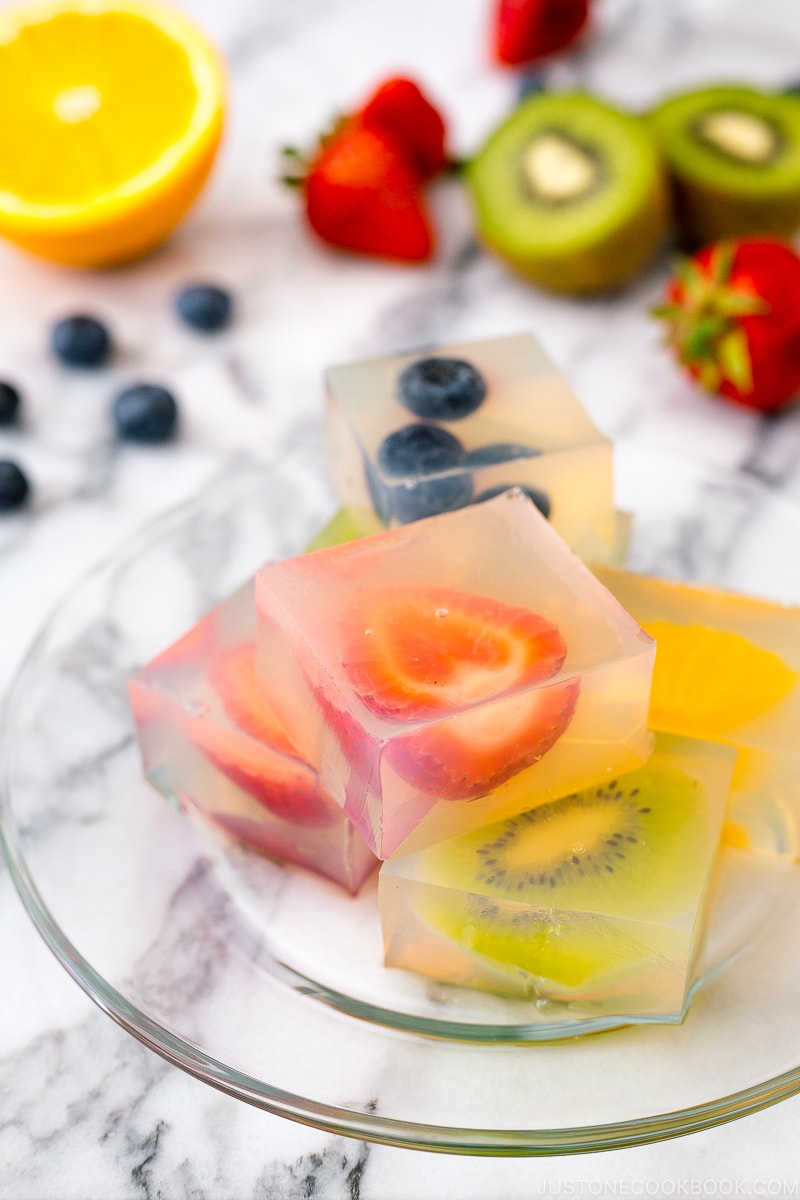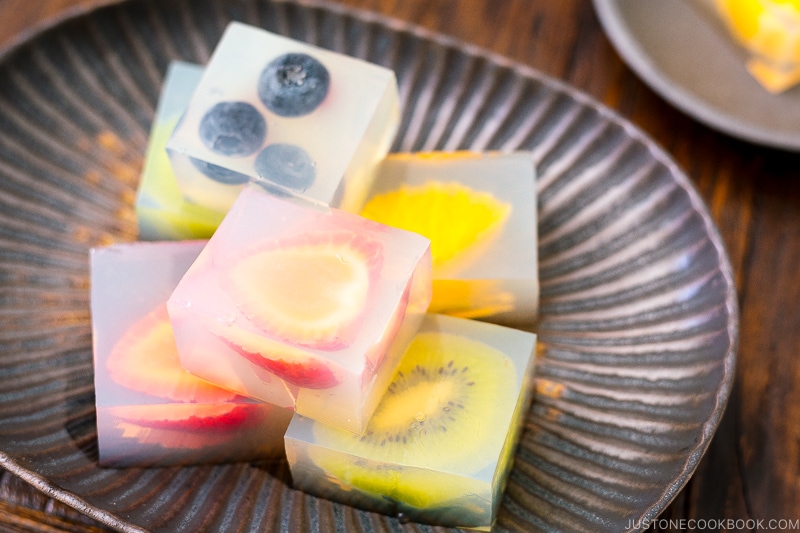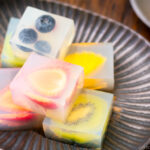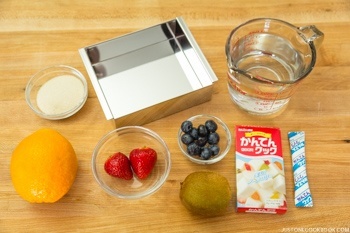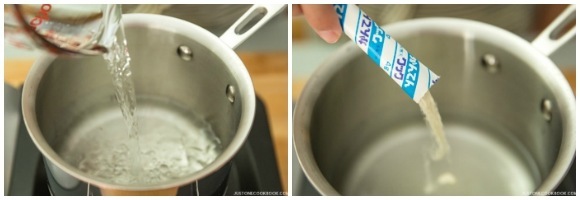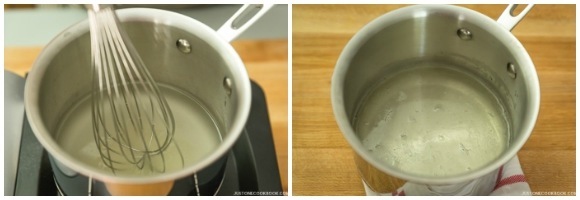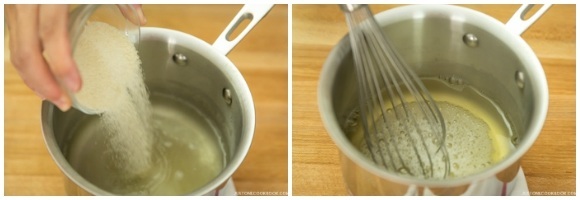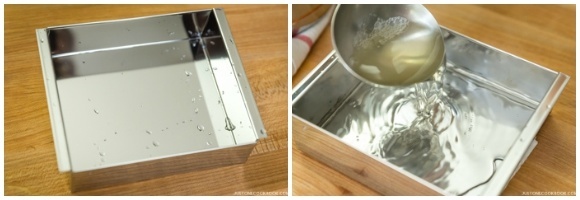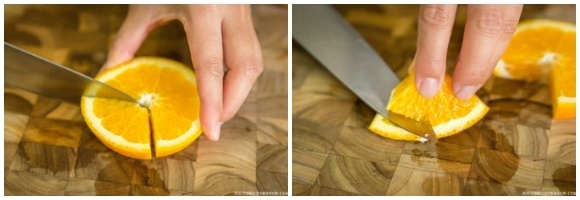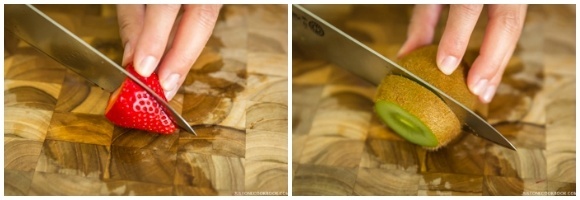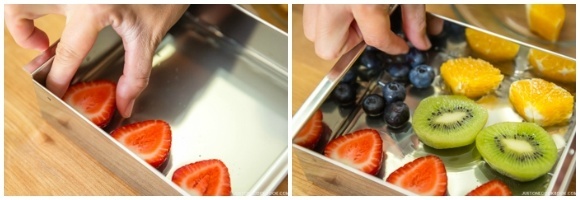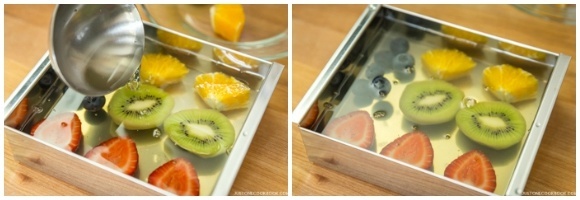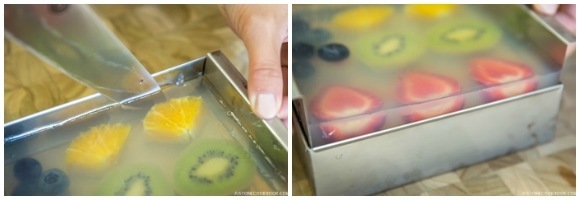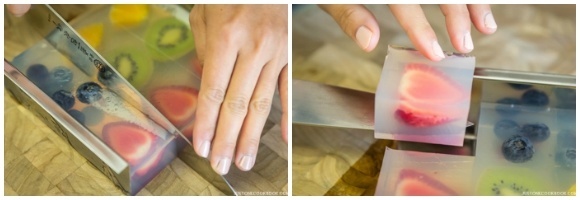What are your favorite sweets to enjoy and cool down with on hot summer days? One of my favorites is this translucent fruit jelly. The see-through jelly reminds me of ice cubes and instantly makes me feel cool as I imagine the chilled jelly with refreshing fruits in my mouth. I made this jelly in my upstairs office when we had our kitchen remodeled, as it requires only a portable stove, a small saucepan, a cutting board, a knife, and a mold. So, if you live in a tiny apartment or a dorm with limited kitchen space, you can make this dessert too! Let me show you how.
Why You’ll Love This Recipe
Super easy to make, portable, and attractive! That means it makes an ideal dessert to serve at a part or for a potluck. Kids and adults love it. A healthy, guilt-free dessert that is also dairy- and gluten-free. There’s no artificial flavors, colors, or additives either.
Ingredients for Fruit Jelly
You need just a few ingredients to make fruit jelly!
Water Kantan powder — This is a vegan-friendly gelatinous substance we use for making jelly. You can sub it with agar-agar or gelatin, but kantan is the best. More details below. Sugar Fruits of your choice — Oranges, strawberries, blueberries, and kiwi work well
How to Make Fruit Jelly
Quick Note on Kanten
Kanten (寒天)—commonly used in Japanese desserts—is a white and semi-translucent gelatinous substance obtained from algae. Just like gelatin, it solidifies liquid and is the key ingredient we use for making jelly. The benefit of using kanten is that it’s vegetarian- and vegan-friendly, making it a great alternative to animal- or chemical-based gelatin. There are three types of kanten (powder, stick, and thread), and you can use any one of them. I used kanten powder for this recipe. For conversion from 2 tsp (4 g) kanten powder, you will need:
Kanten stick = 1 stick (8 g) Kanten thread = 24 threads (8 g)
You can find it in Japanese and most Asian grocery stores, or online at Mitsuwa or Marukai (for US residents). If you can’t find kanten in your area, you can substitute it with agar-agar or gelatin. If you want to use agar or gelatin instead, you will need 4 teaspoons of agar or powdered gelatin (8 g). Please remember the jelly made with gelatin will quickly melt in the summertime, while kanten will not melt at room temperature (read more here).
Useful Equipment for Making Jelly
Nagashikan – A Mold with a Removable Inner Tray
To make this fruit jelly recipe, you can use a mold or a baking pan with a higher rim and place plastic wrap on the bottom to un-mold easily. We also use it to make Tamago Tofu (玉子豆腐) and traditional cold treats like Yokan (羊羹, azuki bean jelly). Another option is to cut all the fruits into small cubes and serve this dessert in individual glass cups. I usually make my fruit jelly that way, and it looks pretty in a glass container. If you serve this jelly in individual cups, reduce the kanten powder to 2 grams. That way, the jelly is softer and jiggly. Today’s recipe requires us to cut around the fruits, so the jelly is designed to set firmer and won’t jiggle as much.
Helpful Tips
If you prefer a softer jelly texture that is not as firm, like my fruit jelly today, you can reduce the amount of kanten powder to 2 grams (half the package). If you do so, I highly recommend chopping the fruits into smaller cubes, making the jelly in individual cups or a large baking pan, and serving with a spoon. Less kanten powder will result in a jelly that jiggles (プルプルって感じ) and goes down your throat smoothly. If you prefer to make this “ice cube” style, keep the ratio as it is. 2. Choice of fruits Besides the fruits I used for this recipe, you can use cherries, raspberries, apples, grapes, mango, and peaches. Canned mandarin oranges and peaches or pineapple are excellent choices, as the syrup adds sweetness. I recommend an assortment of colorful fruits that will look pretty suspended in the jelly. 3. Amount of sugar This recipe uses 4 tablespoons (1/4 cup) of sugar. To call this dish a ‘dessert,’ this amount is necessary. If you want to omit the sugar or use less, the fruits you use must be super sweet or canned in syrup. Use 4 tablespoons for a healthier jelly, and 6-8 tablespoons for a ‘dessert’ fruit jelly. Please adjust the sugar amount to your liking.
More Summer Desserts You’ll Enjoy
Japanese Strawberry Milk Plum Cake (Blueberry and Peach, Too) Best Cherry Bars with Brown Butter Mango Lassi Popsicles Chocolate Gateau (Chocolate Cake)
Wish to learn more about Japanese cooking? Sign up for our free newsletter to receive cooking tips & recipe updates! And stay in touch with me on Facebook, Pinterest, YouTube, and Instagram.
